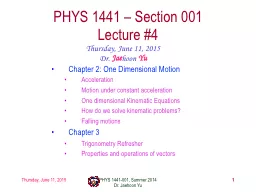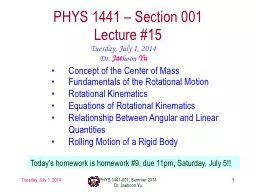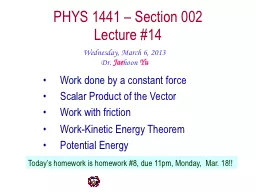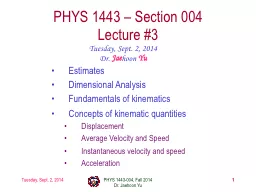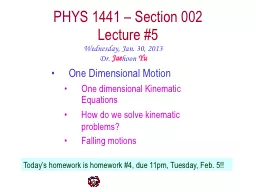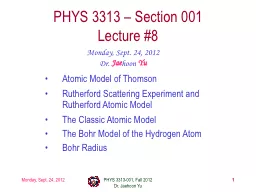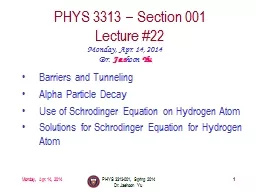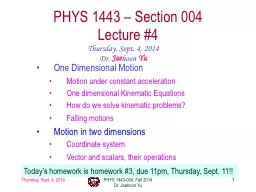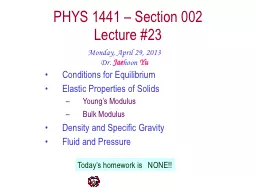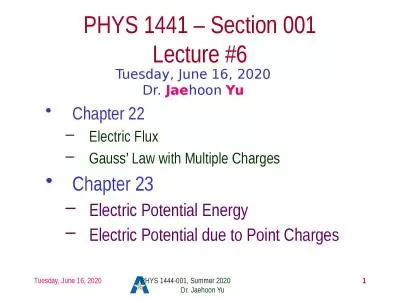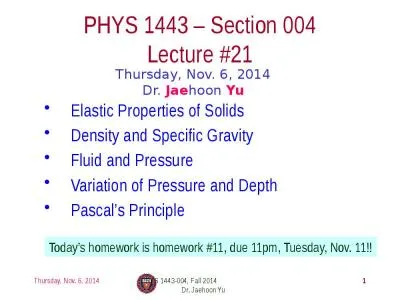PPT-Thursday, June 11, 2015 PHYS 1441-001, Summer 2014 Dr. Jaehoon
Author : calandra-battersby | Published Date : 2018-03-23
Yu 1 PHYS 1441 Section 001 Lecture 4 Thursday June 11 2015 Dr Jae hoon Yu Chapter 2 One Dimensional Motion Acceleration Motion under constant acceleration
Presentation Embed Code
Download Presentation
Download Presentation The PPT/PDF document "Thursday, June 11, 2015 PHYS 1441-001, S..." is the property of its rightful owner. Permission is granted to download and print the materials on this website for personal, non-commercial use only, and to display it on your personal computer provided you do not modify the materials and that you retain all copyright notices contained in the materials. By downloading content from our website, you accept the terms of this agreement.
Thursday, June 11, 2015 PHYS 1441-001, Summer 2014 Dr. Jaehoon: Transcript
Download Rules Of Document
"Thursday, June 11, 2015 PHYS 1441-001, Summer 2014 Dr. Jaehoon"The content belongs to its owner. You may download and print it for personal use, without modification, and keep all copyright notices. By downloading, you agree to these terms.
Related Documents

